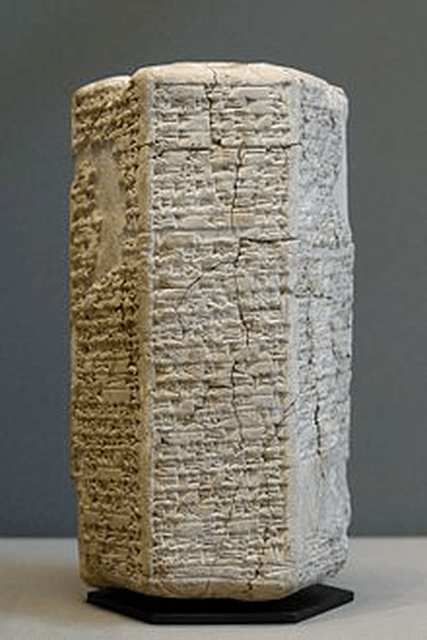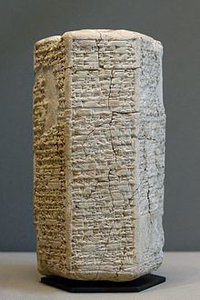Kharsag Epics

Kharsag Epics
The Kharsag Epics (modern translation: Hursag Epics) is the name given by geologist and former chairman of Anglo-Iranian Oil Company, Christian O'Brien to a series of nine Archaic Sumerian epic poems from Nippur (known to some as Nibiru) in Mesopotamia (ancient Iraq) including the Barton Cylinder and the Kesh temple hymn that and are among the earliest known works of ancient literature.
Some esoteric scholars believe that these texts originated as a series of legends and poems about the earliest mythological hero-gods including Anu (O'Brien called An), Enlil, Enki and Ninhursag (O'Brien called Ninkharsag) in a location called Kharsag by O'Brien, nowadays transliterated Hursag.
The Epics are contained in Sumerian tablets and cylinders recovered by Dr. John Henry Haynes during the University of Pennsylvania's excavations at Nippur in 1896-1898 and translated originally by George Aaron Barton, from whom O'Brien developed his work.
History
The epics were first translated in 1918 by professor of Semitic languages and the history of religion George Aaron Barton under the title "Miscellaneous Babylonian Inscriptions". They are dated considerably earlier than the Gudea cylinders to at least the reign of Akkadian king Naram-Suen of Akkad (ca.
2190 – 2154 BC Short Chronology) and possibly as early as 2,500BC.
Barton originally dated them even earlier to 2704-2660BC according to Breasted's chronology.
The second Kharsag Epic, a reverse cut cuneiform cylinder, described by George Aaron Barton as "The oldest religious text from Babylonia" mentions Kharsag in the first line of the second verse - "the holy sceptre of Enlil establish Kharsag ". [1]
The Sumerian text of tablet 8383 (as translated above) amounts to 268 lines of cuneiform though 19 columns of inscription.
Of these 268 lines (as numbered for translation purposes) 226 are transcribed in whole or in part, with 42 obliterated lines unresolved.
Christian O'Brien explained that there are actually 320 lines of inscription on this cylinder.
A further analysis of all columns in the 1980s resolved some of the previous partial-line results and moved many more into translation.
From columns I-VIII (1-8), three hitherto uninterpreted addresses by Ninkharsag were now evident.
From columns IX-XV (9-15) was information concerning Enlil's great house (the E-gal) at Kharsag.
And, from columns XVI-XIX (16-19), were additional details concerning the 'sickness' with which Enlil and his brother Enki were stricken.
By adding in the supplementary translations O'Brien brought the overall 320 lines to a point of 82.5% completion.
Content of the tablets
The stories start with the descent of the Annunaki (called Annanage by O'Brien) from Mount Hermon and revolve around the their settlement in a nearby plain and constrcting a reservoir, watercourse and buildings.
Christian O'Brien's translations generally favoured less supernatural explanations than some esoteric scholars, suggesting the epics were a historical record of events and the origin of agriculture at a historical location, suggested to be the modern day Aaiha plain near Rashaya.
O'Brien suggested that after a catastrophe, there was a "diaspora" of "the Shining Ones" from the Southern Lebanon site spreading agriculture and domesticated grains around the world.
This starts with the establishment of a further six major settlements by members of the Annunaki council at Jericho, Baalbek, Ebla, Çatalhöyük, Olympus and On. OBrien suggested that the development of such city states eventually led to the great civilisations in the Mesopotamian plains, Egypt, Iran and India.
The University of Pennsylvania Museum of Archaeology & Anthropology Museum Numbers are compared with Barton's titles, modern titles and O'Brien's titles of the tablets below:
Museum number | Barton's title | Modern title | O’Bren's title |
14,005 | A Creation Myth | Debate between sheep and grain | The Arrival of the Anannage |
8,383 | The oldest religious text from Babylonia | Barton Cylinder | The Decision to Settle |
9,205 | Enlil and Ninlil | Enlil and Ninlil | The Romance of Enlil and Ninlil |
11,065 | A hymn to Dungi | Self-praise of Shulgi (Shulgi D) | The Planning of the Cultivation |
8,322 | An Old Babylonian oracle | Old Babylonian oracle | The Building of the Settlement |
8,384 | Fragment of the so-called "Liturgy to Nintud" | Kesh temple hymn | The Great House of Enlil |
8,310 | Hymn to Ibbi-Sin | Debate between Winter and Summer | The Cold Winter Storm |
8,317 | An excerpt from an exorcism | Hymn to Enlil | The Thousand Year Storm |
19,751, 2,204, 2,270 & 2,302 | A prayer for the city of Ur | Lament for Ur | The Final Destruction (Kharsag is overwhelmed by flood water, destroying the dam, reservoir and disabling the great watercourse.) |
See also
List of artifacts significant to the Bible
Sumerian literature
Babylonian literature
Atra-Hasis
Sumerian creation myth
Deluge (mythology)
Gilgamesh flood myth
The Garden of Eden
Samuel Noah Kramer
Temples of Mount Hermon
Temples of the Beqaa Valley
